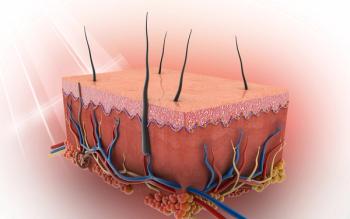
Oncology NEWS International
- Oncology NEWS International Vol 9 No 12
- Volume 9
- Issue 12
New Melanoma Regimens Fail to Improve on Interferon
HAMBURG, Germany-Attempts to improve on interferon-based regimens for melanoma with alternative immuno-stimulant strategies are proving less successful than originally hoped, according to presentations at the 25th Congress of the European Society of Medical Oncology (ESMO).
HAMBURG, GermanyAttempts to improve on interferon-based regimens for melanoma with alternative immuno-stimulant strategies are proving less successful than originally hoped, according to presentations at the 25th Congress of the European Society of Medical Oncology (ESMO).
IL-2 Disappointing
Adding high-dose interleukin-2 (IL-2) to a regimen of dacarbazine, cisplatin (Platinol), and interferon-alfa-2b (IFN, Intron A) has no significant effect on response rate or overall survival in patients with advanced melanoma, according to the first analysis of a trial conducted by the European Organization for Research and Treatment of Cancer (EORTC).
The EORTC trial, which involved 363 patients, ranks as the largest randomized study ever performed in metastatic melanoma.
Study enrollees received up to four cycles of dacarbazine (250 mg/m² on days 1 to 3), cisplatin (30 mg/m² on days 1 to 3), and IFN (10 MIU/m² on days 1 to 5), with or without intravenous IL-2, given according to a decrescendo schedule on days 4 to 9. Most of the participants had visceral metastases, and half had impaired performance status.
The response rate according to World Health Organization criteria was rather low, noted Ulrich Keilholz, MD, of Berlin, whose group developed the IL-2 decrescendo regimen. Objective responses were achieved in 24% of patients without IL-2 and 22% of patients with IL-2, so there was clearly no difference he said.
Dr. Keilholz stressed that the report is a first analysis, and, because of time pressure, approximately 20% of responses have not yet been verified by central review.
Disappointingly, after a median follow-up of 2.3 years, overall survival was the same in both treatment arms. Median survival in the EORTC study was 8.2 months.
However, a provocative finding emerged from an analysis of the survival data according to performance status, which was a prerandomization stratification variable. In patients with a baseline Karnofsky score of 100%indicating no impairment in performance statusthe survival data revealed a trend favoring IL-2.
We need further follow-up in this group to see whether this trend may translate into a significant difference within the next 6 to 9 months, Dr. Keilholz said. He stressed that multivariate analysis is the only way to confirm whether IL-2 affords any advantage in the good-prognosis subgroup. The EORTC will be pursuing additional studies of the potential role of IL-2 in advanced melanoma patients with unimpaired performance status.
Vaccine No Substitute for IFN
Vaccination with an antibody against GM2 ganglioside, a well-defined melanoma antigen, has failed to displace high-dose interferon-alfa-2b as the gold standard for high-risk resected stage IIB-III melanoma, said John Kirkwood, MD, of the University of Pittsburgh Cancer Institute. He reported the results of a recent US Intergroup phase III study.
The trial randomized 880 patients with T4 or node-positive disease to receive the so-called GMK vaccine, administered weekly for 4 weeks and thereafter every 12 weeks for 96 weeks, or high-dose IFN, given 5 days a week for 4 weeks and thereafter every other day for 48 weeks.
Although the GMK vaccine induced IgM antibodies in 87% of patients and IgG antibodies in 33%, immunologic efficacy did not translate into clinical benefit. Review of the data after 16 months of follow-up revealed significantly superior relapse-free survival and overall survival among patients on high-dose IFN.
With 774 eligible patients, in this, our largest trial of high-dose IFN to date, 39% of patients on the vaccine relapsed vs 25% of those in the IFN group, Dr. Kirkwood said. Mortality was 20.8% among the vaccine patients, compared with 13.5% among IFN-treated patients, he added.
The advantage of IFN relative to the vaccine was significant across all treatment strata, but was greatest in patients without nodal involvement. On the positive side, the GMK vaccine was considerably less toxic than IFN, and there was no evidence to suggest that it had any adverse effect on patient outcome.
High-dose IFN is therefore reaffirmed as the standard of adjuvant therapy, as it has been in the United States for the last 5 years, Dr. Kirkwood said.
Articles in this issue
almost 25 years ago
Radiation Therapy After Mastectomy: Mistaken Assumptionsalmost 25 years ago
Use Caution in Retinoid Chemoprevention Trialsalmost 25 years ago
Antifolate + Platinum in Advanced NSCLCalmost 25 years ago
Colorectal Cancer Screening Working, But Challenges Remain Remainalmost 25 years ago
Faces Pain Scale Useful in Evaluating Pain in Younger Childrenalmost 25 years ago
NIH Funds Two New CAM Cancer Therapy Research Centersalmost 25 years ago
Most Cancer Patients Say They Are Unaware of Clinical Trials Surveyalmost 25 years ago
Vessel Sealing Tool Effective in Laparoscopic Colon Surgeryalmost 25 years ago
Use of EPA Improves Cachexia in Patients With Pancreatic Canceralmost 25 years ago
PCOS Shows Effects of Prostate Cancer Treatment on Patients’ Quality of LifeNewsletter
Stay up to date on recent advances in the multidisciplinary approach to cancer.


















































































